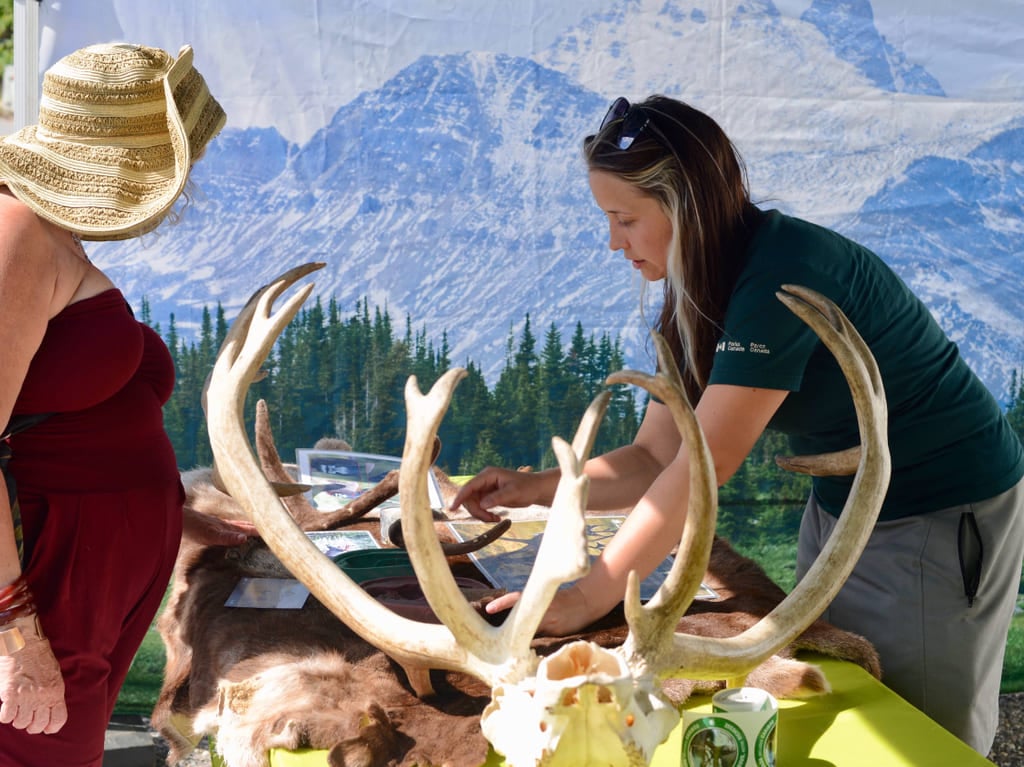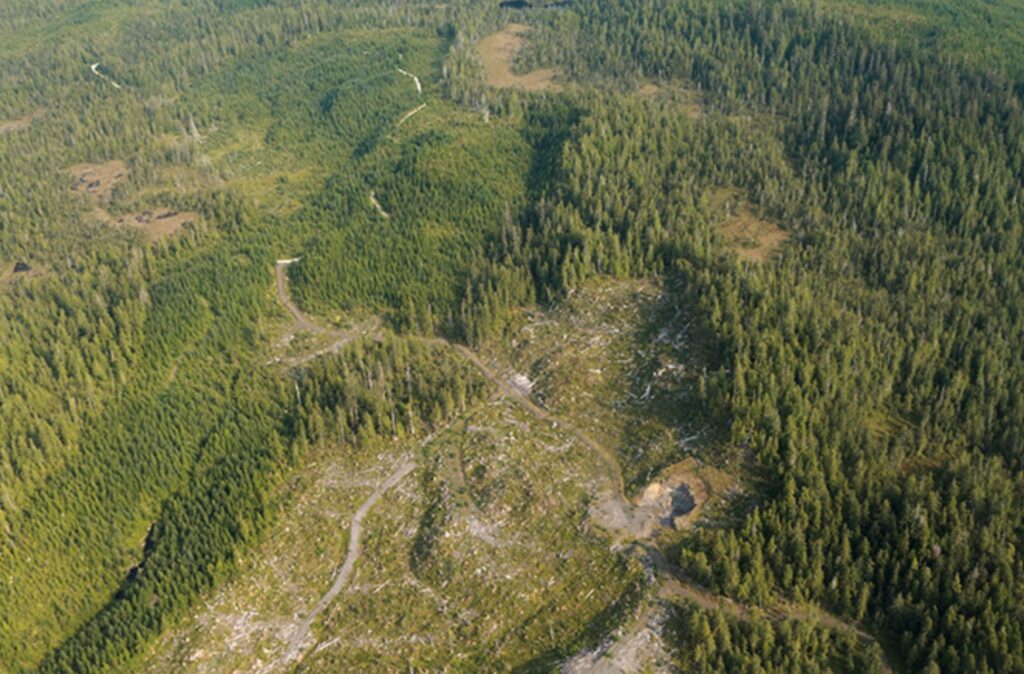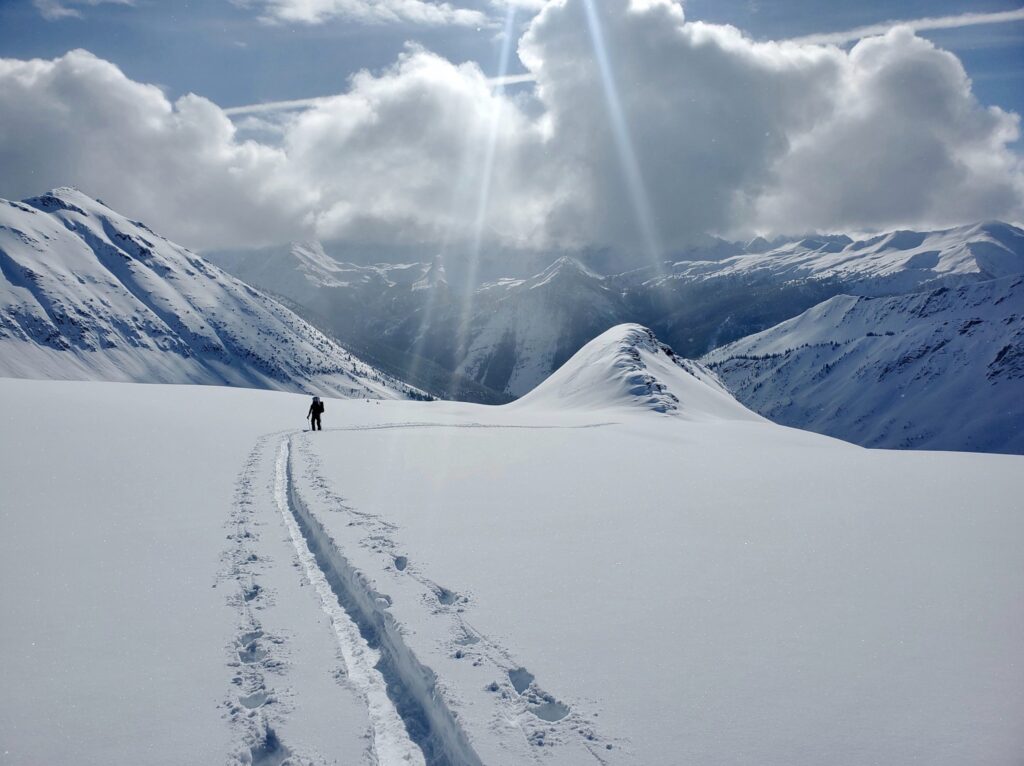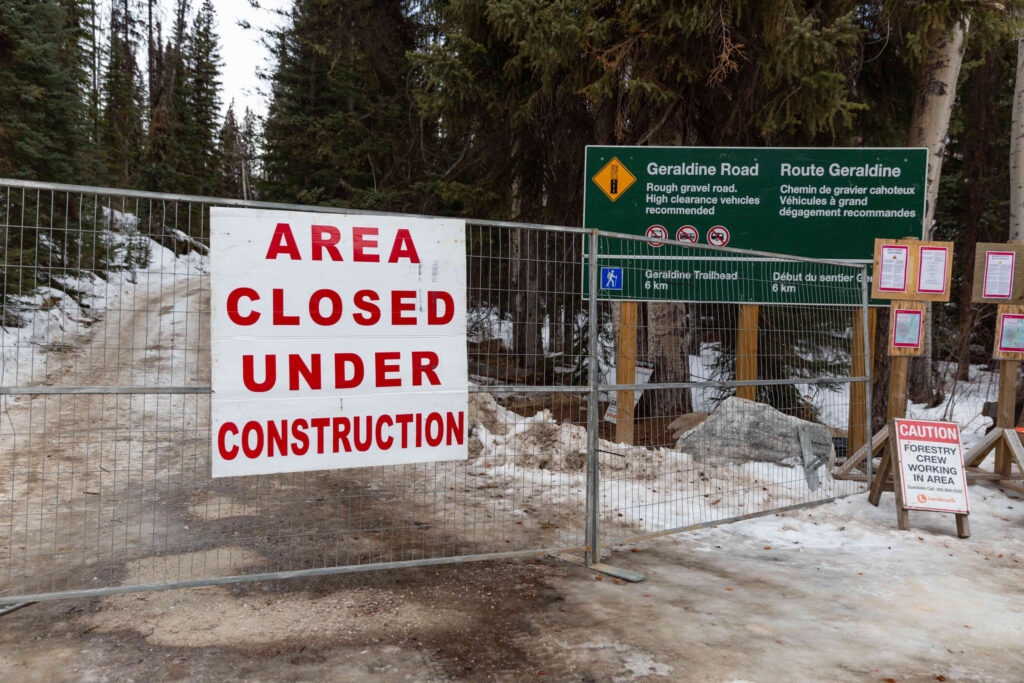Dear Editor,
Jasper National Park management has closed large parts of formerly prime backcountry ski terrain as part of a larger program to protect and restore caribou populations that have sharply declined over the past century. JNP offers the hypothesis that ski tracks facilitate wolf movements and resulting predation of caribou.
It is not an unreasonable hypothesis. Every backcountry skier knows that it’s easier to follow a ski track than to break trail. When I became aware of the closures a few years ago, I was curious to learn more and I came to the subject primed to find compelling evidence.
What kind of evidence would suffice? I started my search assuming that direct observation of caribou following ski tracks with subsequent predation. Observation might include eyewitness accounts, photographic evidence from trail cams, or tracking data showing specific caribou-wolf encounters leading to predation.
These kinds of evidence don’t seem to exist. When JNP claims such evidence, it’s clear that it is highly circumstantial and requires additional assumptions and interpretation to conclude any cause and effect. JNP biologists always infer skier culpability even when data are ambiguous.
Here’s an example, from correspondence authored by JNP Communications Officer Janelle Verbruggen:
“Caribou 66 died at Moat Creek in May 2009, which is also very unusual wolf habitat. There were a lot of wolf signs at her kill site, and the snow was crusted on top (as it is in May). We did not have wolf GPS data from this site, however, because neither the pack nor the individual was collared at the time. But, this site is deep in the Tonquin and the kill site was 500 metres from mapped trails. We were only able to access the mortality site late in the month after much snow had melted (one of the limitations to monitoring collars—aerial relocation flights are expensive and can only be done every 1-2 months), so ski tracks were not visible anymore, but given the use of the lodge as a base camp for exploration in the Moat region, it is extremely likely that there were closer informal trails than just the mapped ones.”
Applying some additional interpretation, we can say that there were no known ski tracks in the area. May is not prime ski season. JNP knows when the lodge was occupied and by whom. Was anyone there? Or do they assume that tracks are durable throughout the season? Past practice opened up the Tonquin in late season because ski and snowmobile tracks offer no special advantage to wolf movements on a harder snow pack. Is that irrelevant? In general, we don’t know where ski trails were set away from trailheads and chokepoints, yet JNP insists that skiers are to blame.

I also note that five caribou predations have been noted nearby at the confluence of Tonquin Creek with the Fraser River. As far as I’m aware, that has not been an area known to have been used by backcountry skiers or snowmobiles. So it doesn’t seem to be such unusual wolf habitat after all, I suppose.
My point is NOT that wolves don’t travel on ski tracks, but instead that it’s usually impossible to separate the effects of ski tracks from snowmobile tracks from existing tracking data, and that JNP at every turn tries to paint skiers as the culprits when there is much more ambiguity than that.
The observed caribou mortality data do give pause. If JNP were more open to public input, we might have had an honest discussion and all arrived at a common endpoint. At least, there might have been some goodwill generated and an agreement to amicably disagree. Instead, they convene hand-selected panels of experts behind closed doors to confirm their pre-existing biases and then deliver their closure pronouncements to the public.
Turning now to the literature, my entry point was the public information provided by JNP’s website and its periodic caribou reports which contain extensive bibliographies of published studies. What I found instead was lots of irrelevant research conducted primarily on resource extraction industries in which the authors clearly never even thought to include ski tracks as a factor in caribou decline.
Most studies on human effects on caribou consider large-scale human disturbances like clear cutting, forestry service roads, seismic lines, utility corridors, perhaps OHV trails, and sometimes including highways and paved roads. The important keyword is “linear features.”

A quick keyword search turns up dozen (hundreds?) of articles about caribou and linear features. Trying to discern what constitutes a linear feature is maddeningly difficult and varies from study to study. Sometimes it’s undefined completely. Most commonly when defined it comprises roads (what kind? highways? gravel roads?) and seismic lines. I will go out on a limb and suggest that no study of industrially-affected terrain includes seasonal backcountry ski tracks.
Even so, JNP management includes these studies in its caribou reports and uses them to buttress the skiers-kill-caribou hypothesis. Even their own studies fail to make distinctions that render conclusions about ski tracks. Most inside-the-parks studies discuss “packed trails” (although “linear features” is also common and equally poorly defined).
One example publication that I initially thought might be the “smoking gun” that contained solid observations of wolf predation via ski tracks is contained in the monograph chapter “Influence of Anthropogenically Modified Snow Conditions on Wolf Predatory Behaviour,” by Paquet et al.
The paper, which has Parks Canada-affiliated authors, claims to have observed nine wolf predation events in the mountain parks arising from travel on “human-modified trails.” Hurray, just what I was looking for! Well, in fact, human-modified trails include those affected by snowploughs, snow machines, track-setting equipment, skis, dog sleds, and snowshoes, without distinction. Snowploughs, even! I contacted all of the authors asking for records so that I could discern which predations occurred via ski tracks. No one knew the answer and no one had the records. I was told that Jasper National Park was the custodian of the records, but I was told by JNP biologists that no such records exist. Dead end. I was taken aback that records from a published study that pertain directly to a matter of public policy were so carelessly handled.
Another publication that I studied carefully was “Caribou encounters with wolves increase near roads and trails: a time-to-event approach,” by Whittington et al. which has several JNP-affiliated authors. This paper interprets the time-location data collected from collared wolves and caribou. I hoped this would provide some insights and potentially confirm the skiers-kill-caribou hypothesis.

I am not a wildlife biologist, I’m an engineer with a background in dynamic modelling from data. The specific techniques of mathematical ecology are not in my toolset, but I was willing to learn.
This paper is next-to-unintelligible to the knowledgeable lay reader, but I undertook studying the methods and was prepared to attempt to replicate the analysis of the paper. I was rebuffed, stonewalled actually, when I requested the source data. After an access to information request, I was sent the data files, which I discovered to be a mess and completely unusable without interpretation or explanation. I had requested computer codes which I had hoped to study to learn more, but no codes were provided. Therefore, I’m left to understand the paper as best I can without being able to confirm anything from the data.
An initial pass over the paper revealed an apparent anomaly in Figure 2. In my experience, a seasonal model fitted to data would normally have endpoint continuity constraints (C0 continuity) imposed. We would also likely wish to impose a smoothness constraint via C1 continuity. This isn’t shown in the figure. Is this an error? It seems to be. This is perhaps the most simple of the statistical approaches being deployed and undermines confidence in the entire paper, which would seem to require a high-level ability to use and interpret GIS and statistical tools.
The methodology of the paper seems to rely on trail maps that use summer trails. There is no acknowledgement that ski tracks might be seasonal and laid down away from permanent summer trails. Skiers regularly use frozen creeks for example. This doesn’t seem to be understood or incorporated into the paper’s concept of linear features. The cross-year curve fitting has no obvious way to deal with extreme year-to-year variability in the snow pack.
The whole approach seems ad-hoc to the extreme, in particular the concept of different-year encounters. Perhaps if I were educated in the field, it would hold together better.
It should also be noted that these time-location data sets are not rich and that processing the data required a plethora of assumptions. When it comes to curve fitting, parameter estimation and making inferences, caution is warranted at every turn. Time-location data are highly spatially and time correlated. How this is accommodated is not explained?

Lastly, I’ll comment on the literature that purports to prove that wolves sink deeper into snow that is away from compacted trails.
They seem to quantify the obvious, i.e., that it’s easier to follow a trail than break one yourself, and the various papers on this topic drop weights into snow both on and off trails and measure penetration. Typically, the weight is chosen so that the pressure on the bottom surface of the weight corresponds to the pressure of a wolf paw at rest on the snow.
This approach is almost comically simplistic. We learn in high school physics that F=ma. The acceleration necessary to propel a moving animal will create dynamic forces that are much higher than the static force of its weight. And the friction of a furry paw on the snow is certainly different from a weighted tuna can (in one study).
Furthermore, snow science typical from any Avalanche Skills Training course informs us that the properties of the snow pack reflect the totality of snowfall and weather events since the first accumulation. Additional factors include aspect and wind exposure. Picking a trailside location to drop weights neglects so many factors as to render attempts at quantification ridiculous.
In closing, I’ll agree that theory and data strongly suggest that travel by wolves and other animals is facilitated by compacted trails. Upon closer study, the specific question of whether backcountry ski tracks increase caribou predation is more ambiguous. JNP biologists and administration have portrayed their closures as based on settled science and have refused to admit any ambiguity. They have stonewalled my attempts to engage on legitimate questions.
Contributing to a sense that the science is being misleadingly portrayed is a demonstrated antipathy for backcountry travellers, both summer and winter. The superintendent was quoted recently (and I will paraphrase slightly) as saying that it was a good thing that the Simon Creek bridge was swept away by ice because the life hazard that this created for hikers will help preserve the ecological integrity of the upper Whirlpool River. He equates the human presence in the backcountry with damage to ecological integrity.
Since ecological integrity is the first priority for Parks Canada, a careful reading of this statement would lead people to the logical conclusion that JNP management is seeking to remove people from the landscape.
Closures and the ongoing purposeful neglect of backcountry bridges and infrastructure only reinforce that view.
Edward S. Meadows, Edmonton


